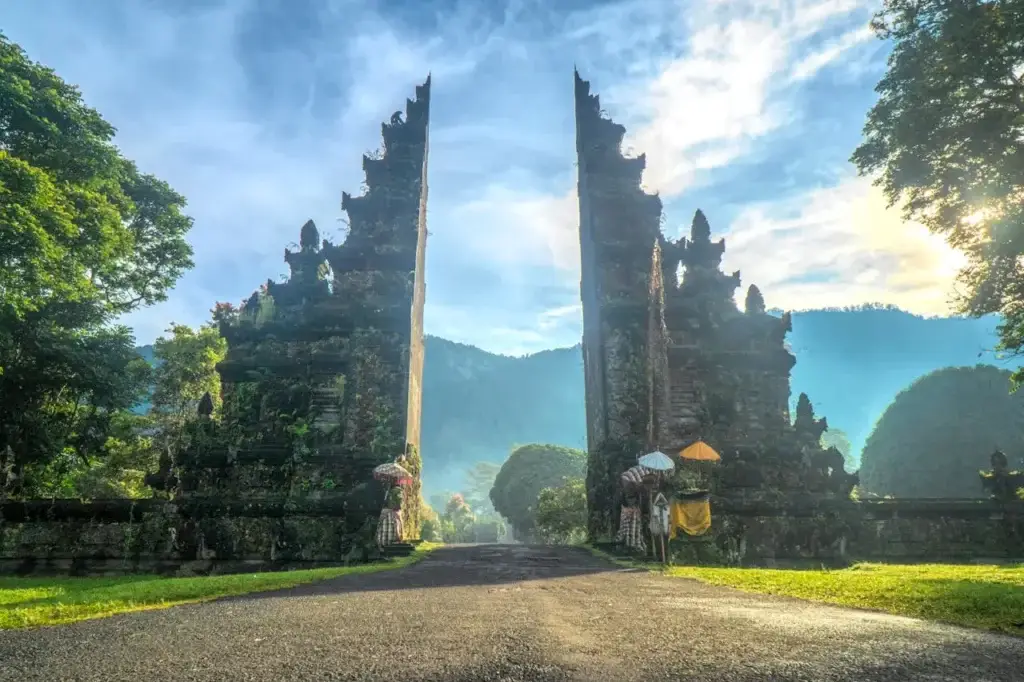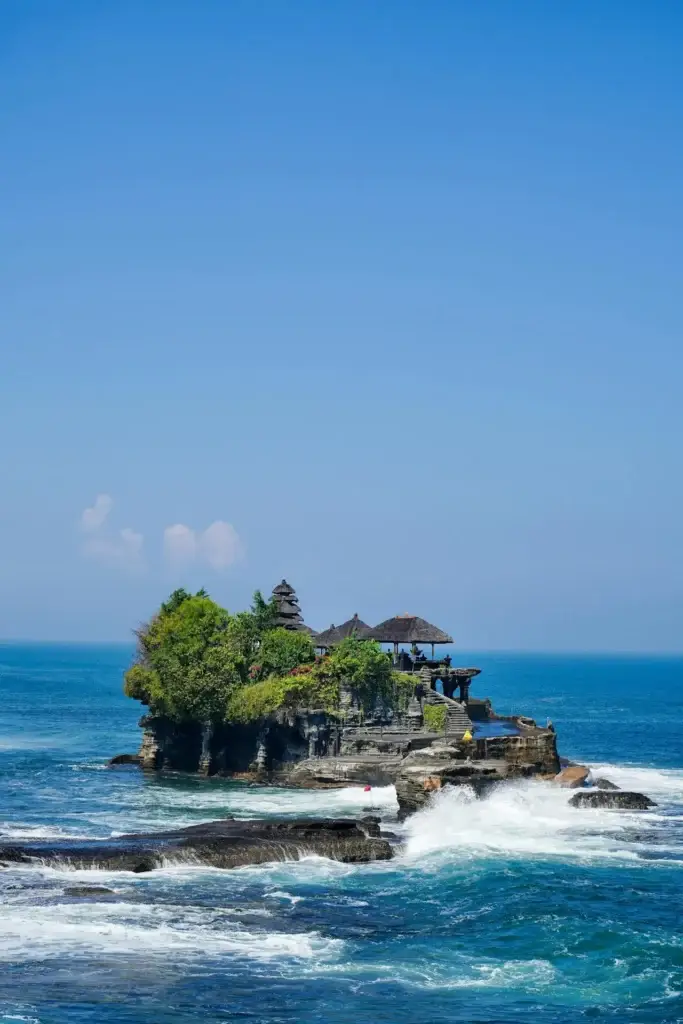The Best Time to Visit Bali: Your Ultimate 2025 Guide
Table of Contents
Dreaming of the best time to visit bali getaway? Discover the perfect time to visit this Indonesian paradise, tailored to your interests and budget. As one of Southeast Asia’s most beloved destinations, Bali’s allure is timeless – but when you visit can dramatically shape your experience.
This comprehensive guide will help you navigate Bali’s seasons and climate patterns to ensure your trip aligns perfectly with your travel goals. Whether you’re seeking sun-soaked beaches, uncrowded temples, or budget-friendly accommodations, timing is everything on the Island of the Gods.

Understanding Bali’s Tropical Climate
Bali enjoys a tropical monsoon climate characterized by year-round warmth and distinct wet and dry seasons. Unlike destinations with four seasons, Bali’s weather patterns revolve primarily around rainfall rather than temperature fluctuations.
Dry Season (May – September)
The dry season is widely considered the best time to visit Bali for consistent sunshine and outdoor activities.
Weather Data:
- Temperature: 73-91°F (23-33°C)
- Rainfall: 1.5-3 inches (40-80mm) monthly
- Humidity: 70-80%
- Sunshine: 9-10 hours daily
Pros:
- Perfect for beach days, surfing, and outdoor exploration
- Comfortable lower humidity levels
- Consistently sunny skies and spectacular sunsets
- Ideal for photography with clear visibility
Cons:
- Peak tourist season with higher prices (especially July-August)
- Popular attractions can be crowded
- Advance bookings essential for quality accommodations
Shoulder Seasons (April & October)
These transitional months offer an excellent compromise between good weather and value.
Weather Data:
- Temperature: 75-90°F (24-32°C)
- Rainfall: 3-7 inches (80-180mm) monthly
- Humidity: 75-85%
Pros:
- Reduced crowds compared to peak season
- More competitive pricing for accommodations
- Still plenty of sunshine with occasional refreshing showers
- Lush landscapes beginning to emerge (October)
Cons:
- Slightly unpredictable weather patterns
- Some afternoon showers are possible
- Higher humidity than peak dry season
Wet Season (November – March)
While many travelers avoid the wet season, it can be the worst time to travel to Bali for beach activities but surprisingly rewarding for other experiences.
Weather Data:
- Temperature: 74-88°F (23-31°C)
- Rainfall: 8-13 inches (200-340mm) monthly
- Humidity: 80-90%
Pros:
- Significantly lower prices for accommodations
- Fewer tourists and more authentic experiences
- Vibrantly green landscapes and dramatic waterfalls
- Perfect for photography (between rain showers)
Cons:
- Daily rainfall (typically heavy afternoon showers)
- Potential for flooding in certain areas
- Reduced visibility for diving and snorkeling
- Some outdoor activities may be canceled


Regional Variations
Bali’s climate varies significantly across different regions:
- Southern Coast (Kuta, Seminyak, Nusa Dua): Hotter, drier, and more consistent weather year-round.
- Central Highlands (Ubud, Munduk): Cooler temperatures, especially at night, with more rainfall than coastal areas.
- Northern Coast (Lovina, Amed): Generally drier than the south during the wet season with calmer seas.
“Ubud tends to be cooler and wetter than Seminyak, especially in the rainy season, with temperatures typically 3-5°F lower and afternoon mists common around rice terraces.”
Month-by-Month Bali Weather Breakdown
Understanding Bali’s weather by month helps you plan your perfect trip:
| Month | Avg. Temp (°F) | Rainfall (inches) | Humidity | Sea Temp (°F) | Crowd Level | Price Level |
|---|---|---|---|---|---|---|
| Jan | 74-88 | 12 | 85% | 82 | Low | Low |
| Feb | 74-88 | 10 | 85% | 82 | Low | Low |
| Mar | 75-90 | 8 | 80% | 83 | Low-Medium | Low-Medium |
| Apr | 75-90 | 4 | 75% | 84 | Medium | Medium |
| May | 74-90 | 3 | 75% | 83 | Medium | Medium |
| Jun | 73-88 | 2 | 70% | 82 | High | High |
| Jul | 73-86 | 2 | 70% | 81 | Very High | Very High |
| Aug | 73-86 | 1.5 | 70% | 80 | Very High | Very High |
| Sep | 73-88 | 2 | 75% | 81 | High | High |
| Oct | 75-90 | 5 | 75% | 82 | Medium | Medium |
| Nov | 75-90 | 9 | 80% | 83 | Low-Medium | Low-Medium |
| Dec | 74-88 | 11 | 85% | 82 | Medium | High |
Pro Tip: The Balinese New Year, Nyepi (Day of Silence), falls in March. During these 24 hours, the entire island shuts down completely—no flights operate, no one leaves their homes, and even lights must be kept to a minimum. Plan accordingly!
Best Time to Visit Based on Your Interests
For Surfers
- Best Time: May September for consistent swells at southern beaches (Uluwatu, Padang Padang)
- Alternative: November-March for larger swells on western beaches but with less consistent conditions
- Specific Break Timing: Uluwatu peaks July-August; Medewi best December-March
For Divers/Snorkelers
- Best Time: April-November for optimal visibility (20-30 meters)
- Marine Life Highlights: October for mola (sunfish); April-May for manta rays around Nusa Penida
- Avoid: January-February when heavy rains reduce visibility dramatically
For Yoga/Wellness Retreats
- Best Time: April-June or September-October (shoulder seasons)
- Why: Fewer crowds at popular centers like Yoga Barn, The Practice, or Serenity
- Weather Benefit: Less humidity helps with practice comfort
For Cultural Experiences
- Galungan & Kuningan: Major ceremonies occurring every 210 days (floating calendar)
- Temple Ceremonies: Year-round, but particularly beautiful during the dry season
- Bali Arts Festival: June-July in Denpasar
- Respect Tip: Always bring a sarong and sash when visiting temples, regardless of season
For Budget Travelers
- Best Time: January-March (except Chinese New Year) and November
- Savings: Up to 50% off accommodation compared to peak season
- Budget Tips: Negotiate longer stays during the wet season for substantial discounts
For Families
- Best Time: June-August (coincides with school holidays) or April-May
- Family-Friendly Beaches: Nusa Dua and Sanur have gentler waters
- Safety Note: Avoid southern beaches with strong currents during wet season
Practical Planning Tips
Booking Advice
- Book accommodations 3-6 months in advance for July-August and December
- Consider last-minute deals during January-March for significant savings
- Flight prices typically lowest 2-3 months before departure
Packing Essentials
- Lightweight, breathable clothing (regardless of season)
- Rain jacket or poncho during the wet season
- Reef-safe sunscreen and insect repellent
- Temple attire (sarong and sash)
Health & Safety
- Consider travel insurance with coverage for weather disruptions
- Pack water purification options
- Update routine vaccinations before travel
Transportation
- Negotiate driver rates for multi-day services (especially during the wet season)
- Consider weather impact on scooter safety during rainy months
- Download Gojek or Grab apps for reliable transportation
Conclusion
The best time to visit Bali ultimately depends on your priorities. For perfect weather and a vibrant atmosphere, aim for the May-September dry season. For value and fewer crowds, consider shoulder seasons in April and October. For maximum savings and a different perspective of the island, brave the November-March wet season.
Whatever your preference, Bali’s magic transcends seasons—its warm culture, stunning landscapes, and spiritual energy remain constant throughout the year. Start planning your dream Bali getaway today, armed with the knowledge to make it perfect for you!
There are no reviews yet. Be the first one to write one.







